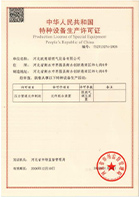
Oct . 02, 2024 00:04
Back to list
Gas Pressure Regulator Importance and Functionality Explained in Detail
Understanding Gas Pressure Regulators A Comprehensive Overview
Gas pressure regulators are essential devices used in various industries to control the pressure of gas flowing from a source to an application. They ensure that the gas is delivered at a consistent and safe pressure, which is critical for the proper functioning of equipment and safety of operations. In this article, we will explore the importance, working principles, types, and applications of gas pressure regulators.
Importance of Gas Pressure Regulators
Gas pressure regulators play a vital role in industries such as manufacturing, pharmaceuticals, food processing, and energy. Their primary function is to reduce the high pressure of gas coming from a cylinder or pipeline to a lower, usable pressure. Without these regulators, equipment may operate inefficiently or fail entirely due to excessive pressure, which can lead to damage, safety hazards, or even explosions.
Moreover, some applications require precise pressure settings to ensure the quality of the final product. For instance, in the food and beverage industry, inconsistent gas pressure can lead to variations in carbonation levels, potentially affecting taste and consumer satisfaction. Thus, maintaining a stable gas pressure is crucial.
How Gas Pressure Regulators Work
The fundamental operation of a gas pressure regulator is relatively straightforward. The device typically consists of an inlet and outlet port, a diaphragm, a spring mechanism, and an adjusting screw. When gas enters the regulator, it pushes against the diaphragm. If the pressure exceeds a predetermined set point, the diaphragm moves, adjusting the valve and allowing some gas to escape, thereby reducing the pressure downstream.
To set the desired pressure, operators can adjust the spring tension using the adjusting screw. This change alters the force needed to compress the diaphragm, which in turn changes the outlet pressure. Some regulators come equipped with pressure gauges, providing immediate feedback on the current pressure levels, allowing for real-time adjustments.
Types of Gas Pressure Regulators
.
1. Single-stage Regulators These are simple devices that reduce pressure from the source to the delivery pressure in a single step. They are suitable for applications with minimal demand fluctuations.
منظم ضغط الغاز

2. Multi-stage Regulators These regulators consist of multiple stages of pressure reduction, making them ideal for applications that require a stable and accurate outlet pressure despite varying inlet pressures. They are commonly used in industrial processes and specialty gas applications.
3. Back-pressure Regulators These devices are designed to maintain a specific pressure in a system by allowing excess gas to vent back to the source. They are widely used in chemical processing and oil and gas applications.
4. Line Pressure Regulators Unlike other regulators that manage inlet pressure, line pressure regulators maintain a specified pressure within a pipeline. They ensure a consistent gas supply to downstream applications.
Applications of Gas Pressure Regulators
Gas pressure regulators find extensive applications across various sectors
- Healthcare In hospitals, regulators control the flow and pressure of medical gases like oxygen and nitrous oxide, which are crucial for patient care.
- Automotive In vehicles powered by natural gas, regulators ensure that the gas is delivered at the proper pressure for efficient combustion.
- Manufacturing Factories use regulators in welding, cutting, and other processes that require precise gas flows to ensure quality and safety.
- Construction Regulators are used in propane and butane gas delivery systems for heating and fueling equipment on construction sites.
Conclusion
Gas pressure regulators are vital instruments that ensure the safe and efficient use of gases in various applications. Their ability to maintain consistent pressure levels safeguards equipment, enhances product quality, and prevents potential hazards. As industries continue to evolve, the demand for sophisticated and reliable gas pressure regulators will only increase, emphasizing their importance in industrial processes and everyday life. Understanding their functionality and applications can help users harness their benefits more effectively.
Latest news
-
Safety Valve Spring-Loaded Design Overpressure ProtectionNewsJul.25,2025
-
Precision Voltage Regulator AC5 Accuracy Grade PerformanceNewsJul.25,2025
-
Natural Gas Pressure Regulating Skid Industrial Pipeline ApplicationsNewsJul.25,2025
-
Natural Gas Filter Stainless Steel Mesh Element DesignNewsJul.25,2025
-
Gas Pressure Regulator Valve Direct-Acting Spring-Loaded DesignNewsJul.25,2025
-
Decompression Equipment Multi-Stage Heat Exchange System DesignNewsJul.25,2025

